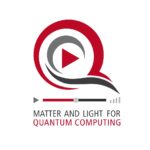 Can you explain what you are doing in your PhD and postdoctoral studies in different levels of difficulty? Are you able to take your audience step by step into the details of your complicated thesis work? Here is how we challenged our researchers!
Can you explain what you are doing in your PhD and postdoctoral studies in different levels of difficulty? Are you able to take your audience step by step into the details of your complicated thesis work? Here is how we challenged our researchers!
In our video series Unsere Forschung im Dialog, PhD students for our cluster try to explain their work first to a high school student, then to a bachelor student and dig deeper in a conversation with a master or PhD student. Finally they discuss their work with their supervisor and relate their work to the bigger picture of the cluster’s mission.
Today, we are happy to release the third video on Quantum Cryptography. How can quantum mechanics ensure tap-proof communication? That’s what Nathan, Felix and Johannes are discovering at Heinrich Heine University in Düsseldorf. Federico Grasselli and Gláucia Murta work in the research group of Dagmar Bruss and investigate different scenarios of data encryption. Watch the video and find out why correlations need to be random in order to ensure secure communication:
In the last months we published the first video of this series on Quantum Optics. Christian (Kurtscheid) from the Weitz group at the University of Bonn explained how he was able to split a superphoton in the lab.
The second video was on Quantum Simulation. Nicola (Wurz) from the Köhl group at the University of Bonn is talking about magnetism and how she is using ultracold atoms in order to simulate magnetism in the solid state. She tells Lea, Veli and Johann what she has found out about changing magnetic orders in the double layer. Finally, she and Michael (Köhl) present how these findings can help in the development of quantum computing architectures. Watch here and find out why the video starts in front of a car park: